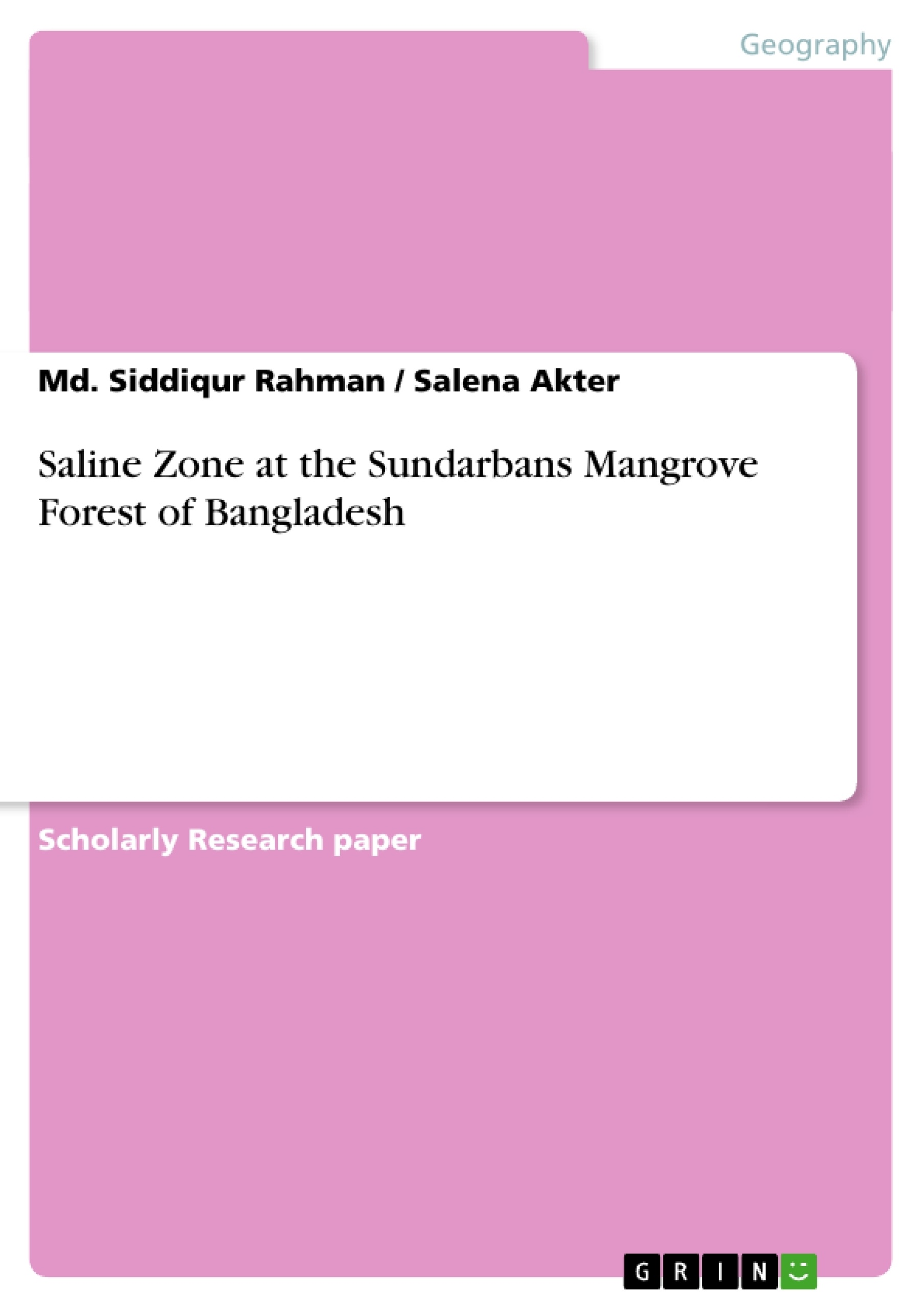Excerpt
Abstract
The Sundarbans in Bangladesh part is one of the largest mangrove forests in the tropics comprising about six thousand square kilometers of forest area. It possesses unique character of having ebb and tide at every six hours, hence having salinity intrusion in its rivers and canals from Bay of Bengal. The forest is experiencing heavy saline intrusion in its lower saline zones. Therefore, there is a need to enumerate the saline water intensity in various zones of the forest. Present study tries to find out how much saline intensity exists in different rivers and canals of the Sundarbans. Results depicts that saline intensity was much higher in southwestern part, where it is moderate in northeastern part. Present study reveals the range of PH values between 6.5 and 7.7. PH was found to be lower in Kachikhali and Karamjol points, where Katka, Dublar char and Hiron point shows higher value i.e. near alkaline water. Western zone is higher saline intensive than eastern part. Electrical conductivity found to be between 5.2 and 24 dSm-[1] (desi siemens per meter) in different sample collection points. Amount of NaCl (mg/L) was found between 15 and 30 mg/L. Therefore, the Sundarbans river systems and canals have strong saline intensity and the water quality seems to be brackish.
Keywords
Saline intensity, PH and EC, NaCl, Saline zone, Bangladesh Sundarbans
Introduction
The Sundarbans is the largest single block of tidal halophytic mangrove forest in the world (Banglapedia 2006). It has been recognized as an international Ramsar Wetland Site and declared as a World Heritage Site by the UNESCO (United Nations Educational Scientific and Cultural Organization) in 1997 (Rashid et al. 2008). Total area of the World Heritage Site is 1400 sq. km. out of which 910 sq. km. is land and 490 sq. km. is water (Banglapedia 2006). Sundarbans is a region of transition between the freshwater of the rivers originating from the Ganges and the saline water of the Bay of Bengal (Wahid et al. 2002). The forest has been divided into three ecological zones, based on salinity and distribution of species composition such as i) less saline/fresh water zone, ii) moderately salt water/moderately saline zone and iii) salt water zone/strong by saline zone (Karim 1988).
Here saline water intrusion is highly seasonal. It is at its minimum during the monsoon (June-October) when the main rivers discharge about eighty percent of the annual fresh water flow. In dry season months, the saline front begins to penetrate inland, and the affected areas rise sharply from 10 percent in the monsoon to over 40 percent. Extreme weather events induced by climate change, especially low flow conditions in the dry season, will accentuate the saline intrusion in the coastal areas (Islam and Ahmed 2004).
Sundarbans might risk adding one more stress to a fragile ecosystem that will likely be critically impacted by sea level rise and salinity concerns (Agarwala et al. 2003). The SRF is presently undergoing fundamental, long-term ecological changes due to progressing sedimentation, siltation, subsiding tectonic movements, and possibly sea level changes.
The forest floor varies from 0.9 m to 2.11 m above sea level (Katebi and Habib 1987). The forest consists of numerous creeks and rivulets which play a crucial role in bringing a balance between saline and fresh water: the former being brought by semi-diurnal tides, and the latter through rivers and precipitation which helps continuously flush the salinity off the forest floor. Freshwater tends to dominate during the monsoon season while salinity levels are highest in the dry season that precedes the monsoons (Agarwala et al. 2003). Clarke and Hannon (1970) reported salinity to have the major effect on the mangrove zonation patterns and are correlated with tree height gradients. Therefore, it could be very much susceptive to heavy salinity intrusion other than its normal threshold level. Thus, a need may exist to measure and identify locations with high saline intensity in different places of Sundarbans.
Materials and methods
Materials
To identify water quality in the forest rivers and canals following instruments were used such as PH meter, Electrical conductivity meter and Refractometer were used to measure PH, Electrical conductivity and saline intensity of sample water respectively. Laboratory analysis was conducted to measure the amount of NaCl (gm/L) found in sample water.
Study site
The Sundarbans originally measured (about 200 years ago) to be of about 16700 km². Now it has reduced to about 1/3 of the original size (Wahid et al. 2002). The forest lies between 89° 00' and 89° 55' east longitudes and 21° 30' and 22° 30' north latitudes. It has an area of 5770 km[2], of which 4016 km[2] covered by the forests and the remaining 1756 km[2] are in the form of rivers, canals and creeks, varying from a few meters to several miles (Hussain and Acharya 1994). Forest Resources Management Project (FRMP), 1998 (modified) reported the area as 6017 km[2] where rivers occupy a major portion (1905 km[2]), about 32 percent of the total area. Figure 1 indicates the location of sample collection points in the Sundarbans reserve forest and it’s administrative and conservation sites.
[...]
- Quote paper
- Md. Siddiqur Rahman (Author)Salena Akter (Author), 2009, Saline Zone at the Sundarbans Mangrove Forest of Bangladesh, Munich, GRIN Verlag, https://www.grin.com/document/283836
Publish now - it's free






















Comments